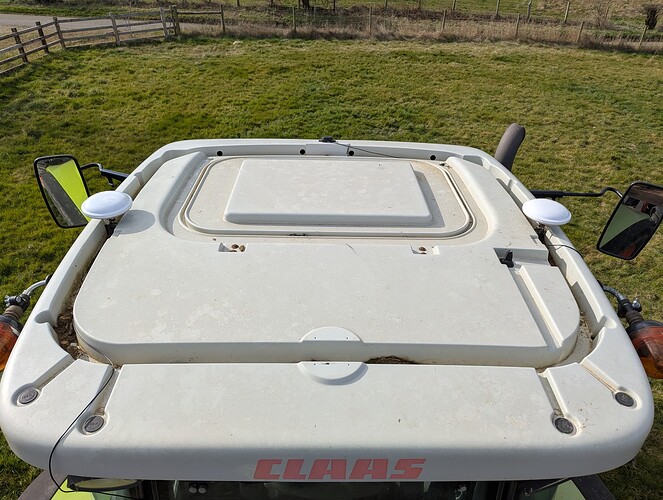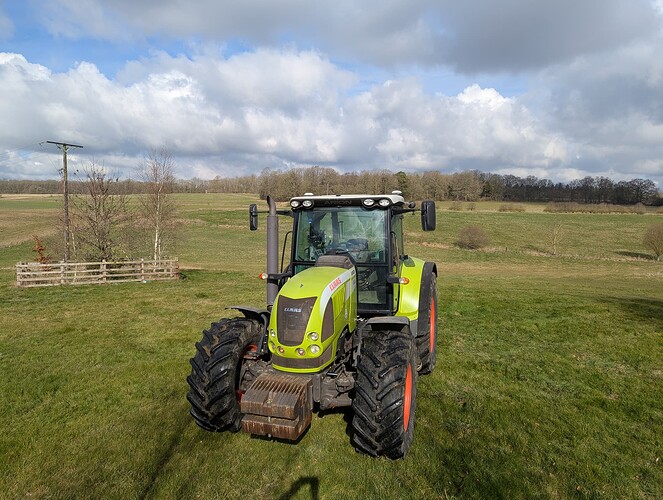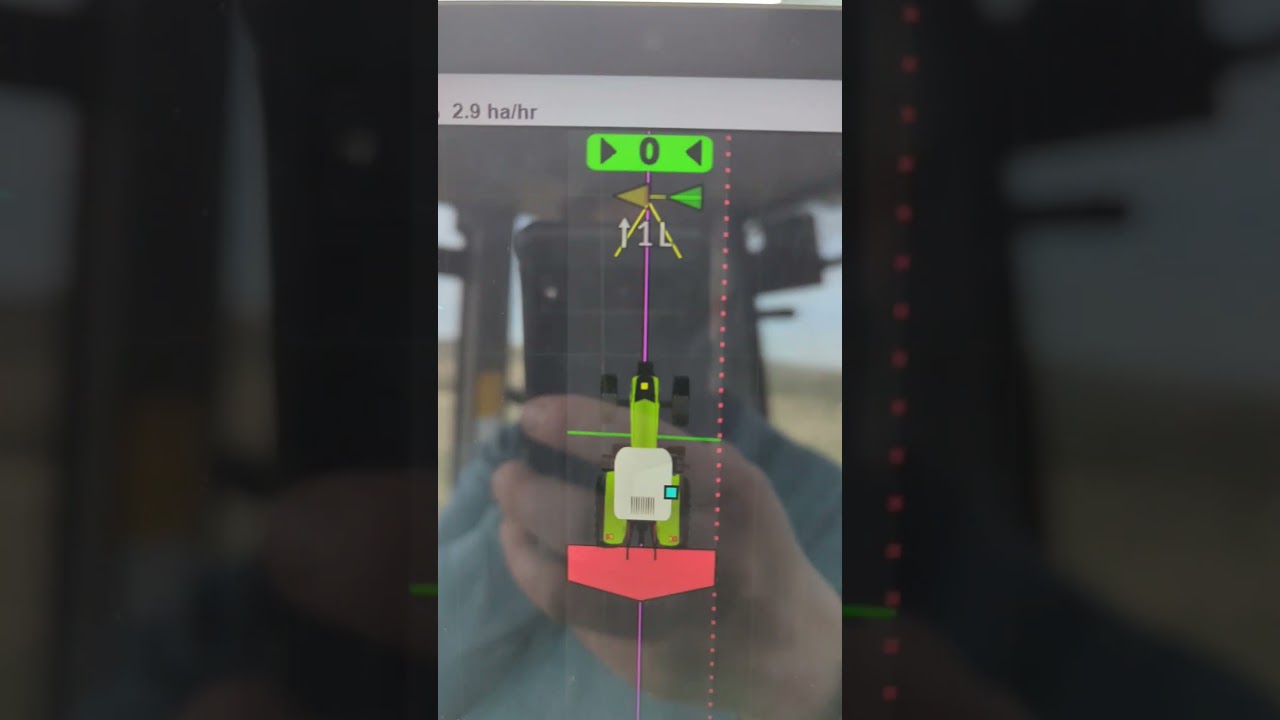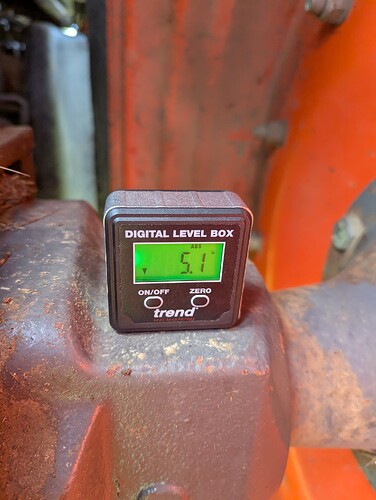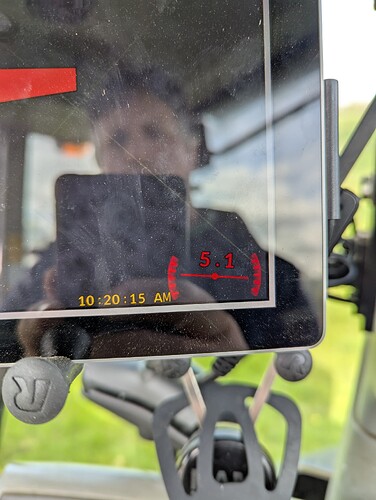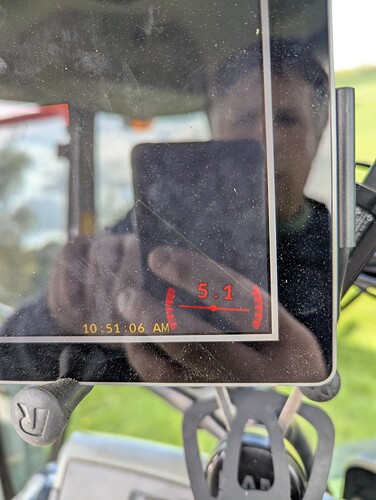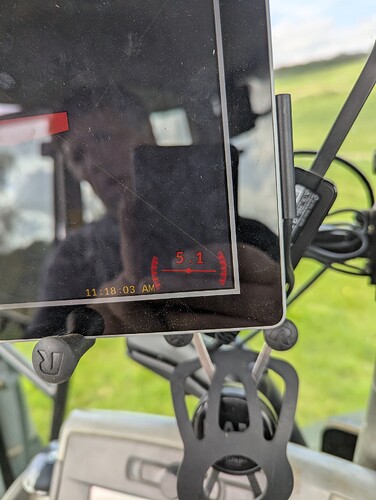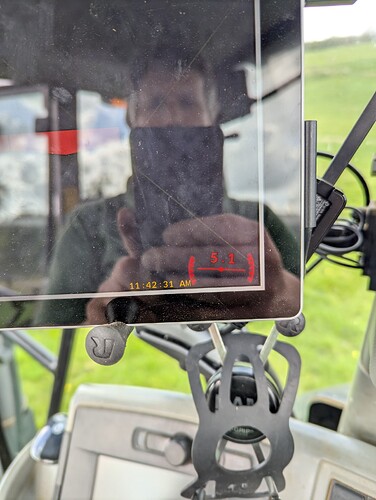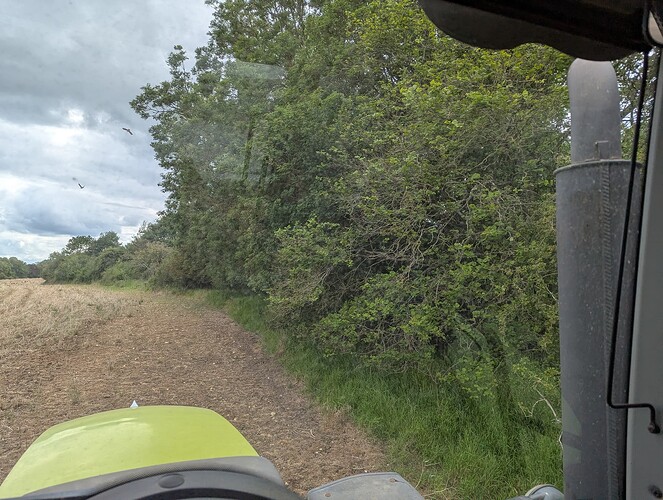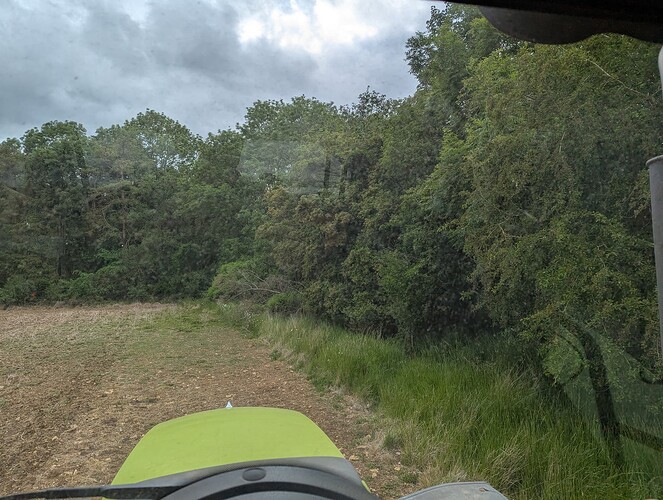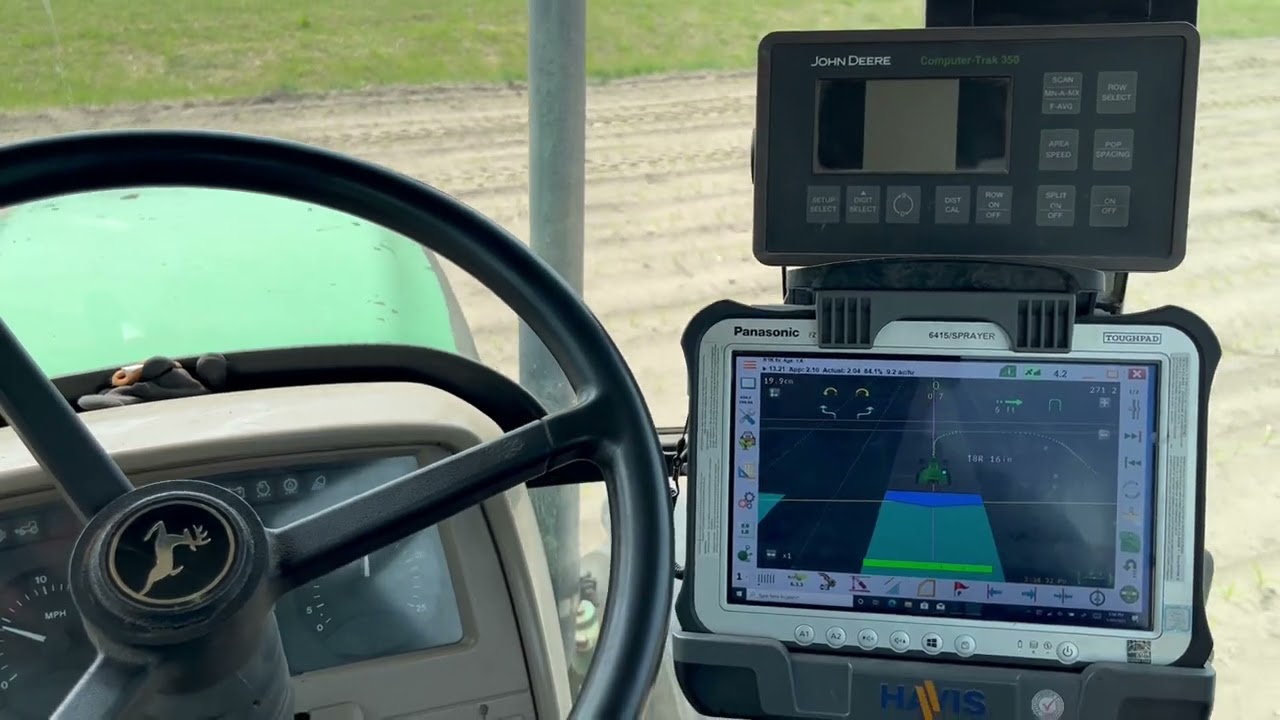I’ve run Single F9P and BNO085 IMU for the last three years and been very pleased with the results, steers very smoothly, very straight and with very low XTE.
Decided to try Dual antennae as there was a suggestion it maybe the way future AOG development heads (since decided that Single and Dual will both still exist).
So made another AIO with two F9Ps and put two antenneas on the cab, utilising the cab lifting points as mounting points, this gives antennea spacing of 146cm.
Dual uses the right hand antennae for position of the tractor and the left is used to calculate the heading and also together with the position antennae acts as the IMU, by calculating the height difference and the distance between the antenneas the angle of roll can be calculated.
One of the problems with the BNO085 IMU is its affected by sideways acceleration, so if you turn sharply or go over very rough ground the angle of roll is exaggerated, in my testing turning sharply caused the roll to spike by 7 degrees and going over bumpy ground by 3 degress. One degree of angle with an antennae height of 3m equals a 5cm jump in position.
I found Dual didn’t experience these spikes in roll and was much more stable.
Over smooth or slightly bumpy round there was very little difference between Single and Dual, both performed very well and had stable Roll and low XTE values.
Dual was much better doing U Turns and curved boundaries keeping close to the plotted line.
Another positive for dual is the heading at slow speeds is much more stable and the tractor always knows which way its travelling, no need ever to have to reset the direction on screen.
After an hour of testing Single and Dual driving the same AB line, I was able to maintain a lower XTE value more consistently with Dual, both where very good, with Dual I very rarely had an XTE over 2cm (less than half an inch), with single saw a few 3,4 and 5cm XTEs on screen, this maybe to do with settings.
With Dual it doesn’t matter what angle the PCB is orientated, for testing I had it floating about behind the seat.
In conclusion Single and Dual both perform very well, Dual will cost £2-300 more than Single but was more stable on rough ground, better at slow speeds and a more stable heading.
